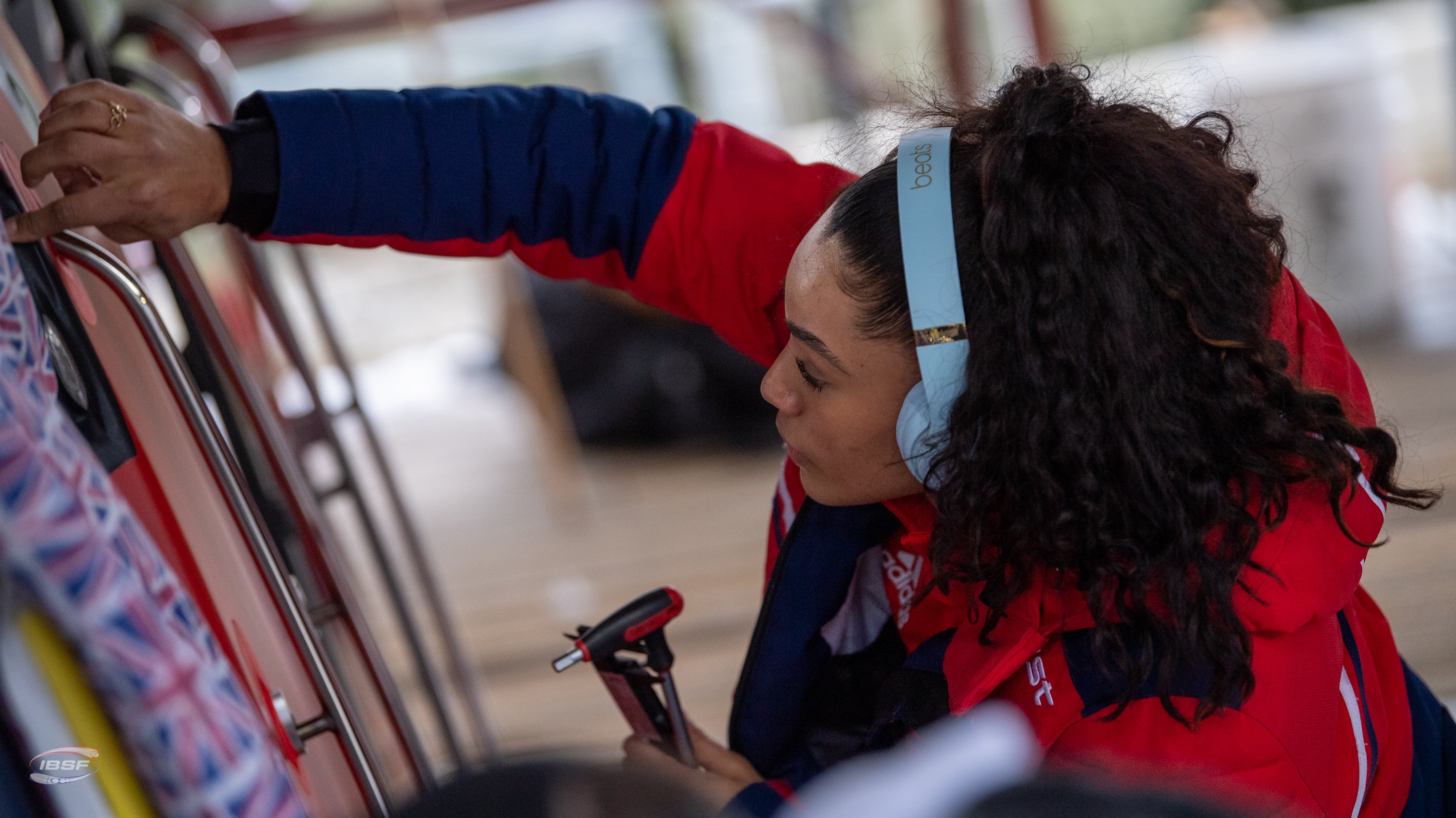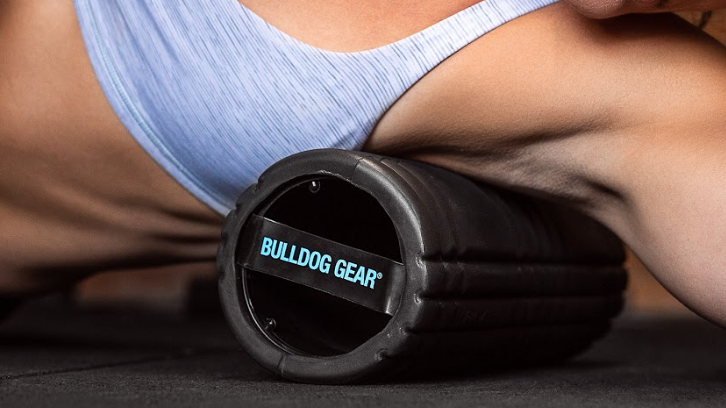

Push-ups are a common first goal for many, and can be extremely satisfying to see and feel your strength progress over time. It’s an incredible movement to achieve, impressive to watch, but also an essential foundation for functioning in everyday life. Learning to push in different planes of motion, and with different hand positions, will also help strengthen your shoulders and safeguard your body. Increasing strength through pushing your own bodyweight will benefit those more advanced goals later down the line, including ring dips and handstand push-ups.
While performing all the following variations of a push-up, make sure you keep a hollow body. Start by setting yourself up in a strong plank position. Initiate the movement by letting the shoulders sit a little ahead of the wrists, then start to lower. This setup will help prevent unnecessary loading of the elbows while avoiding incorrect positioning of the shoulder.

The shoulder is the most unstable joint in the human body. If you’ve been having shoulder and/or elbow pain, it might be worth reassessing how you’re moving. Awareness is essential to keep healthy and controlled body during these movements.
When practising the following progressions and regressions, remember to mix up different hand positions, don’t become complacent with one particular set up. Variation is key!

The negative push-up is a great place to start. It’ll allow you to see if, and where, you may be lacking control throughout the full movement.
Begin in your plank position. Start to bend the elbows and slowly lower the chest towards the floor for about 3-5 seconds, keeping control as you descend. If you can’t perform a full push up, use your knees, while keeping a hollow body, to push back up to the starting position.
Perform 3-5 Sets x 3-5 Reps to start.
Use this as a guide, but adjust sets and reps according to your movement quality. Always remember, quality over quantity. You can add pauses and static holds throughout the movement to help increase strength in weaker positions.
As you get stronger, try adding a load by placing a fractional or bumper plate to your back to continue building strength through the movements range.
Watch full video demonstration here.




By elevating your hands to a box, you’re subsequently decreasing your pushing load. This means you’re ultimately working at a percentage of your own bodyweight. As you get stronger, your platform can be lowered until you eventually reach the floor.
Make sure you check your alignment. We want the elbow to be stacked above the wrist, making sure the chest doesn’t sink towards the box. Remember to squeeze your glutes, creating full body tension while performing the push up.
If you don’t have a box, you can use a stack of bumper plates or even use your staircase at home.
Watch full video demonstration here.



Similar to the box push-ups, barbell push-ups helps visualise progression. You need a squat rack or rig and a barbell available - perfect during open gym and or even in your own garage gym. Using a barbell mixes up the usual grip of a push-up, proving to be a great alternative for those experiencing any wrist problems (due to less wrist extension used from pushing from the floor).
You can adjust the height of the barbell from where it sits in the rig, allowing a more accurate assessment of progression. When pressing on a box, it can daunting going from 30” to a 24” height, the smaller increments used from a barbell push-up can help bridge the gap between these stages. Watching yourself progress from hole 20 to hole 10 can really motivate you, knowing and actually seeing yourself getting stronger.


Squat Rack or Rig

Resistance bands are a fantastic way to help you move through the full range of movement correctly, while also developing the motor control needed to build solid awareness within a particular pattern.
There are a couple options in which bands can be used.
- Band wrapped around the elbows.
- Band attached to pull-up bar and around your hips.
Body position, as with all movements, is key. We want to develop stability for our spine and control the movement throughout.
Watch full video demonstration here.



The ring push-up is another way to progress towards pushing from the floor, with the added benefit of working against a less stable platform.
Lengthen the ring straps so they’re nice and low to the floor. Take hold of the gym rings and walk as far forward as you can go with your arms extended. Perform a push up keeping a hollow body, you might feel unsteady at the start, but practising with help build better stability and control in your push-ups off the rings. To make this movement harder, simply step your feet back to become slightly more horizontal.
This variation is another great alternative for those who struggle with their wrists.
Watch full video demonstration here.


Training our bodies through different variations and stimuli will not only keep it interesting and fun, but also better prepare and safeguard us during workouts and everyday activities.
You might already have a good number of push-ups, however there’s always room for improvement and progression. We can develop the push-up and make it stronger for longer by using more advanced methods of training.

By loading our push-ups, bodyweight will become an easier weight to push up from, enabling us to increase volume and pushing power. If you’re looking to develop your rep range, then this variation needs to be added to your programme.
Weight can be added by placing a fractional or bumper plate on your back, or by wearing a weight vest. You can also use a resistance band to challenge your push-ups, just place the band over your back and under your hands.



Elevate your feet on a box, chair, sofa or up a wall. This will challenge your shoulder’s midline stability, increase strength and is another great variation to keep things interesting.



Not only is it beneficial to change hand positions, it’s also good to challenge yourself by changing the type of platform you're pushing from. We can do this from a variety of different objects such as; resistance bands, medicine balls, dumbbells, uneven surfaces, parallettes and gym rings.




Develop your pushing power by producing large amounts of force quickly through explosive push-ups. Try using your explosiveness to push yourself with enough force to release yourself off the ground. Challenge yourself further by adding a clap or jumping on and off stacked bumper plates.

Pushing your body through a larger range of motion is going to increase your control and strength within that range. These can be done with dumbbells, gym rings or parallettes by allowing your chest to go further than a normal push-up would allow. This helps to safeguard the body while creating a more solid foundation for your standard push-up.



Bear Crawls - This helps strengthen the wrists, load the shoulders but can also work through those tight hamstrings. Start in a standing position, bend over far enough so your hands are able to fully touch the floor, depending on your hamstring mobility you might need to bend your legs slightly. Remember to keep your hips high! From this position start to move forwards using both your legs and your hands. Watch full video demonstration here.
Lizard crawls - Incredible for coordination with easier to more advanced progressions. This will not only increase your overall body awareness, shoulder strength and pushing strength but it’ll also help open the hips. Starting in a bear crawl, reach one hand forward while following with the opposite foot. Make sure you let the hips rotate. Begin with straight arms, overtime you can work your chest closer to the ground. Watch full video demonstration here.
Plank walks - Increase wrist, proprioception and overall body strength. Start in a plank position, keep this position as you start to walk your hands and feet forwards. Watch full video demonstration here.
Crab walks/ Bridge walks - Crab walks or stationary crab raises are a great way to open up the shoulders and chest but can also highlight any tightness in certain areas. You'll feel these a lot in your triceps but also in the whole posterior chain. Try some reaches or turnovers from this position too to work and mobilise a great range in the shoulders. You can make these even more fun by working on your mobility to perform a full bridge, or if you have a bridge challenge it up and walk. This one is big on awareness and coordination. Watch full video demonstration here.



- Georgie Gabriel (The Hench Yogi)



